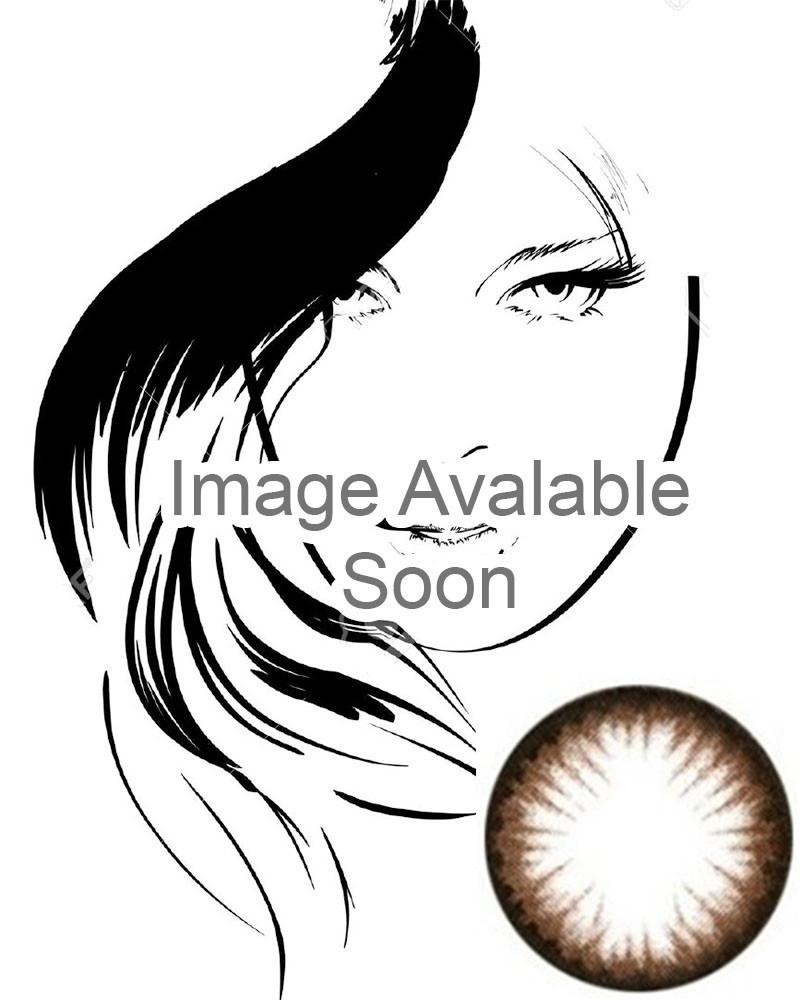Grey Colored Contact is a sexy and mysterious color, and it will help you master the art of the sultry, seductive gaze. Light grey shades are captivating and bright, while darker gray shades intensify your glare. Whether you want the grey of a cloudy sky or the grey of wet concrete, you’ll be able to find something to amplify your look within our selection.
Grey Colored Contact Lenses
Sort by:
Geo Angel Grey 2 Tone Circle Lens CM835
$16.95
| Brand: | GEO |
| Manufacture: | GEO Medical Inc. |
| Origin: | South Korea |
| Model: | CM-835 |
| Diameter: | 14.2 mm |
| Base Curve: | 8.6 mm |
| Water Content: | 40% |
| Life Span: | 1 Year |
| Packaging | A Pair (2) of Circle Lenses |
Geo Ash Wing Grey Circle Lens OL105
$16.95
| Brand: | GEO |
| Manufacture: | GEO Medical Inc. |
| Origin: | South Korea |
| Model: | OL-105 |
| Diameter: | 14.2 mm |
| Base Curve: | 8.6 mm |
| Water Content: | 40% |
| Life Span: | 1 Year |
| Packaging | A Pair (2) of Circle Lenses |
GEO Bella Special Grey 2 Tone Circle Lens BS205
$16.95
| Brand: | GEO |
| Manufacture: | GEO Medical Inc. |
| Origin: | South Korea |
| Model: | BS-205 |
| Diameter: | 14.2 mm |
| Base Curve: | 8.6 mm |
| Water Content: | 40% |
| Life Span: | 1 Year |
| Packaging | A Pair (2) of Circle Lenses |
Geo Fresh Grey Circle Lens FC725
$16.95
| Brand: | GEO |
| Manufacture: | GEO Medical Inc. |
| Origin: | South Korea |
| Model: | FC-725 |
| Diameter: | 14.2 mm |
| Base Curve: | 8.6 mm |
| Water Content: | 40% |
| Life Span: | 1 Year |
| Packaging | A Pair (2) of Circle Lenses |
GEO Mimi Cafe Cappuccino Grey WMM500
$16.95
| Brand: | GEO |
| Manufacture: | GEO Medical Inc. |
| Origin: | South Korea |
| Model: | WMM-500 |
| Diameter: | 15.0 mm |
| Base Curve: | 8.8 mm |
| Water Content: | 42% |
| Life Span: | 1 Year |
| Packaging | A Pair (2) of Circle Lenses |
GEO Mimi Cafe Waffle Grey WMM505
$16.95
| Brand: | GEO |
| Manufacture: | GEO Medical Inc. |
| Origin: | South Korea |
| Model: | WMM-505 |
| Diameter: | 15.0 mm |
| Base Curve: | 8.8 mm |
| Water Content: | 42% |
| Life Span: | 1 Year |
| Packaging | A Pair (2) of Circle Lenses |
GEO Princess Mimi Sesame Grey WMM305
$16.95
| Brand: | GEO |
| Manufacture: | GEO Medical Inc. |
| Origin: | South Korea |
| Model: | WMM-305 |
| Diameter: | 15.0 mm |
| Base Curve: | 8.8 mm |
| Water Content: | 42% |
| Life Span: | 1 Year |
| Packaging | A Pair (2) of Circle Lenses |
Geo Super Angel Grey Circle Lens XCM215
$16.95
| Brand: | GEO |
| Manufacture: | GEO Medical Inc. |
| Origin: | South Korea |
| Model: | XCM-215 |
| Diameter: | 14.5 mm |
| Base Curve: | 8.7 mm |
| Water Content: | 40% |
| Life Span: | 1 Year |
| Packaging | A Pair (2) of Circle Lenses |
GEO Tri Color Grey Circle Lens CM901
$16.95
| Brand: | GEO |
| Manufacture: | GEO Medical Inc. |
| Origin: | South Korea |
| Model: | CM-901 |
| Diameter: | 14.2 mm |
| Base Curve: | 8.6 mm |
| Water Content: | 40% |
| Life Span: | 1 Year |
| Packaging | A Pair (2) of Circle Lenses |
Geo Xtra Aster Grey 2 Tone Circle Lens WTC15
$16.95
| Brand: | GEO |
| Manufacture: | GEO Medical Inc. |
| Origin: | South Korea |
| Model: | WT-C15 |
| Diameter: | 15.0 mm |
| Base Curve: | 8.7 mm |
| Water Content: | 40% |
| Life Span: | 1 Year |
| Packaging | A Pair (2) of Circle Lenses |
Geo Xtra Bella Grey 2 Tone Circle Lens WBS205
$16.95
| Brand: | GEO |
| Manufacture: | GEO Medical Inc. |
| Origin: | South Korea |
| Model: | WBS-205 |
| Diameter: | 15.0 mm |
| Base Curve: | 8.7 mm |
| Water Content: | 40% |
| Life Span: | 1 Year |
| Packaging | A Pair (2) of Circle Lenses |
Geo Xtra Brown 2 Tone Circle Lens WTA45
$16.95
| Brand: | GEO |
| Manufacture: | GEO Medical Inc. |
| Origin: | South Korea |
| Model: | WT-A45 |
| Diameter: | 15.0 mm |
| Base Curve: | 8.7 mm |
| Water Content: | 40% |
| Life Span: | 1 Year |
| Packaging | A Pair (2) of Circle Lenses |
Geo Xtra Diamond Grey 2 Tone Circle Lens WTB35
$16.95
| Brand: | GEO |
| Manufacture: | GEO Medical Inc. |
| Origin: | South Korea |
| Model: | WT-B35 |
| Diameter: | 15.0 mm |
| Base Curve: | 8.7 mm |
| Water Content: | 40% |
| Life Span: | 1 Year |
| Packaging | A Pair (2) of Circle Lenses |
Geo Xtra Grey 2 Tone Circle Lens WTA55
$16.95
| Brand: | GEO |
| Manufacture: | GEO Medical Inc. |
| Origin: | South Korea |
| Model: | WT-A55 |
| Diameter: | 15.0 mm |
| Base Curve: | 8.7 mm |
| Water Content: | 40% |
| Life Span: | 1 Year |
| Packaging | A Pair (2) of Circle Lenses |
Geo Xtra Grey 2 Tone Circle Lens WTB65
$16.95
| Brand: | GEO |
| Manufacture: | GEO Medical Inc. |
| Origin: | South Korea |
| Model: | WT-B65 |
| Diameter: | 15.0 mm |
| Base Curve: | 8.7 mm |
| Water Content: | 40% |
| Life Span: | 1 Year |
| Packaging | A Pair (2) of Circle Lenses |
Geo Xtra Grey 2 Tone Circle Lens WTB85
$16.95
| Brand: | GEO |
| Manufacture: | GEO Medical Inc. |
| Origin: | South Korea |
| Model: | WT-B85 |
| Diameter: | 15.0 mm |
| Base Curve: | 8.7 mm |
| Water Content: | 40% |
| Life Span: | 1 Year |
| Packaging | A Pair (2) of Circle Lenses |
Geo Xtra Grey 3 Tone Circle Lens WTB75
$16.95
| Brand: | GEO |
| Manufacture: | GEO Medical Inc. |
| Origin: | South Korea |
| Model: | WT-B75 |
| Diameter: | 15.0 mm |
| Base Curve: | 8.7 mm |
| Water Content: | 40% |
| Life Span: | 1 Year |
| Packaging | A Pair (2) of Circle Lenses |
Geo Xtra Sakura Grey 2 Tone Circle Lens WIA25
$16.95
| Brand: | GEO |
| Manufacture: | GEO Medical Inc. |
| Origin: | South Korea |
| Model: | WI-A25 |
| Diameter: | 15.0 mm |
| Base Curve: | 8.7 mm |
| Water Content: | 40% |
| Life Span: | 1 Year |
| Packaging | A Pair (2) of Circle Lenses |




































